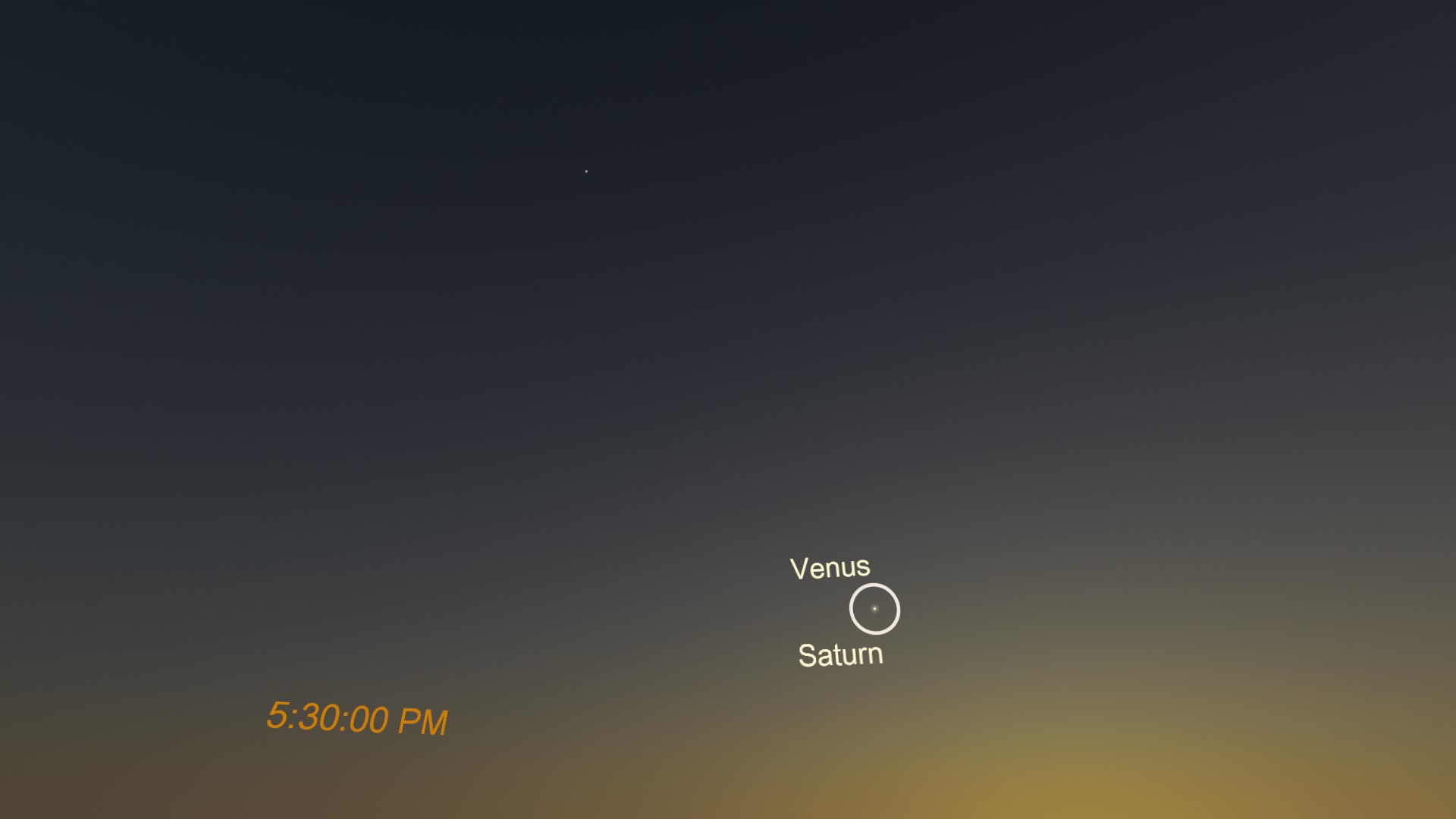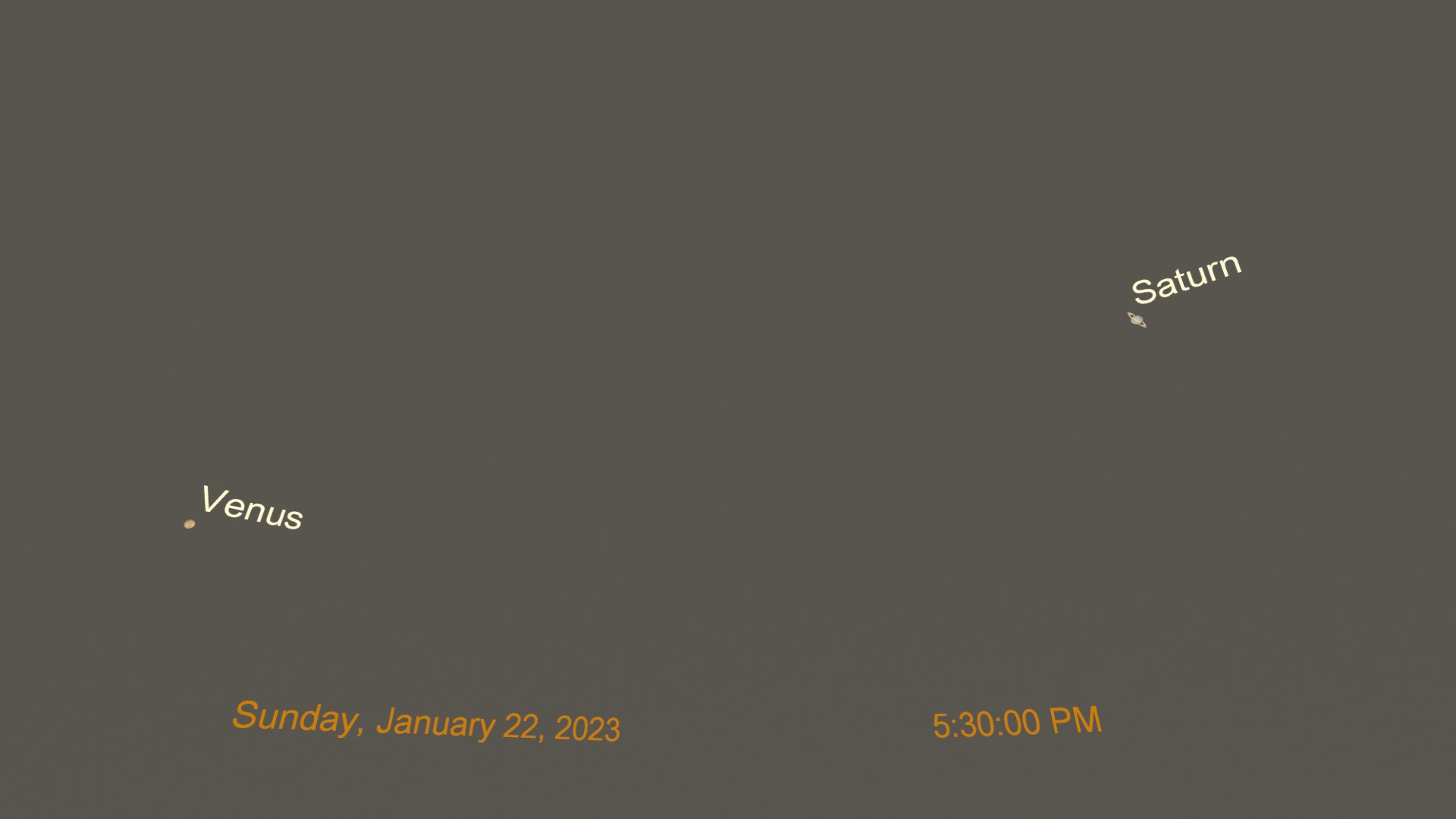Venus is putting on a spectacular show this month, shining bright in the western sky after sunset. As the month continues, it will get higher and brighter until it reaches maximum brightness in early June. Look for Venus shining brightly at magnitude -4 in the constellation Capricornus, the Sea Goat.

Venus and Saturn appear in the same part of the sky after sunset on January 22, 2023.
On January 22, Venus will meet up with the ringed giant Saturn in an event known as a conjunction. This close conjunction will bring the planets 21 arcminutes, less than half a degree, apart - close enough to occupy the same field of view through a telescope. If the skies are clear, we’ll be viewing the event through our telescopes in a special Observatory Open House.

Venus and Saturn at 200x magnification to simulate the view through a telescope.
Conjunctions occur when two or more planets appear in the same part of the sky as either a single bright point or two points very close together. They occur because nothing in the universe is stationary. We’re all moving! As the planets orbit the Sun, some faster and some slower, they sometimes appear to be chasing one another. Venus seems to move quickly in the sky compared to the more distant planets like Jupiter and Saturn. In fact, Venus will be in conjunction with Jupiter on March 1!
You can experience the conjunction on your own by looking to the southwest around 5:30 pm on January 22. The pair will set shortly after, around 7 pm. Telescopes and binoculars are not necessary to view conjunctions, but they enhance the view! If you miss their closest approach on the 22nd, you will still be able to see them close together for a few nights before and after. A crescent moon will join Venus and Saturn on January 23.
Venus will be easy to spot after sunset shining at magnitude -4, while Saturn shines at a more modest +0.7 magnitude, slightly up and to the right of Venus. Remember, apparent brightness, which astronomers measure as apparent magnitude, is reverse logarithmic. The brighter the star or planet is, the lower its magnitude number.